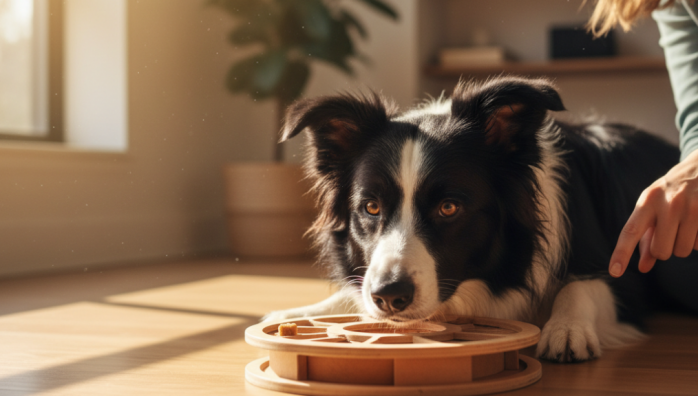Mental Enrichment for Apartment Dogs
by admin in Pet Care Basics 22 - Last Update November 16, 2025

When I first brought my energetic rescue, a Border Collie mix named Finn, into my city apartment, I honestly questioned my sanity. We walked for miles, played fetch until my arm ached, but back inside, he was a coiled spring of restless energy. He’d pace, whine, and get into things he shouldn\'t. It wasn\'t until I had a breakthrough moment—realizing his brain was bored, not just his body—that everything changed. A tired dog is great, but a mentally fulfilled dog is a game-changer for small-space living.
Why physical exercise isn\'t the whole story
I used to think that running a dog hard was the key to a calm dog. But for intelligent, high-drive breeds, physical exhaustion is only half the equation. They were bred to think, problem-solve, and work in partnership with humans. When we don\'t provide an outlet for that mental energy, it comes out in other ways—like destructive chewing, nuisance barking, or anxiety. Think of it like this: you can run a marathon, but if you spend the rest of your day staring at a blank wall, you\'ll still feel restless. Our dogs are no different.
My go-to mental workouts for a small space
Over the years, I\'ve developed a toolkit of simple, apartment-friendly activities that leave Finn more tired than a 5-mile run. The best part? Most of them are free and take less than 15 minutes.
The magic of nose work
A dog\'s primary sense is smell, and using it is incredibly stimulating. I started with the “find it” game. I\'d have Finn sit and stay, then I\'d hide a high-value, smelly treat in the room. At first, I made it obvious, and now he can find a single treat tucked under a rug across the apartment. Another staple is using a snuffle mat or even just rolling treats up in an old towel. This forces him to slow down and use his brain to earn his food.
Puzzle toys and interactive feeders
Mealtime is a perfect opportunity for enrichment. Instead of just dumping kibble in a bowl, I use puzzle toys or slow feeders. It turns a 30-second meal into a 10-minute problem-solving session. I learned to start with easy puzzles to build his confidence before moving to more complex ones. Seeing him figure out a new toy is one of my favorite things.
Leveling up our training
You don\'t need a lot of space for a training session. I spend 10 minutes a day working on new tricks or sharpening old ones. We\'ve mastered things like \'go to your mat,\' \'put your toys in the basket,\' and even some silly party tricks. This kind of focused work strengthens our bond and seriously tuckers him out mentally. It’s about communication and collaboration, which is exactly what these smart breeds crave.
Building a routine that works
The key for us has been consistency. A short enrichment session in the morning and another in the evening provides a predictable outlet for Finn\'s mental energy. It has transformed our apartment from a place of confinement into a space of fun and learning. Remember, what worked for Finn might need to be adjusted for your own dog, but the principle is the same. Engage their brain, and you\'ll unlock a calmer, happier companion. Of course, this is all based on my personal experience, and I always recommend chatting with your vet or a certified trainer about the best activities for your specific dog\'s needs.










